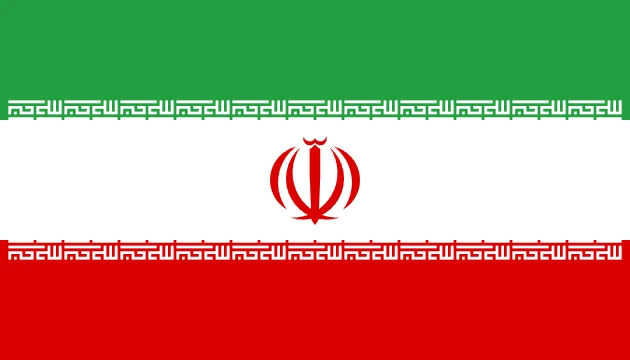Iran Travel Guide
Discover Why You Should Visit Iran
Why Visit Iran?
Iran is a land of ancient empires, rich cultural heritage, and breathtaking architecture. With its storied past, warm hospitality, and diverse landscapes, it offers a travel experience that is deeply historical and soulfully enriching.
Visitors to Iran can marvel at magnificent Persian ruins, wander through colorful bazaars, admire intricate mosques, and enjoy the diverse geography ranging from deserts to lush mountains. Iran is a treasure trove for those seeking authentic culture and timeless beauty.
Ideal for: History enthusiasts, architecture lovers, cultural travelers, and adventure seekers.
Must-Know Facts
Capital/Major City: Tehran
Language(s): Persian (Farsi)
Currency: Iranian Rial (IRR)
Best Time to Visit: March to May and September to November for mild temperatures
Fun Fact: Iran is home to one of the world’s oldest civilizations, dating back to 7000 BC
Top Things to Do
Explore the ancient ruins of Persepolis, the ceremonial capital of the Achaemenid Empire
Wander the historic streets of Isfahan and admire Naqsh-e Jahan Square
Visit the pink-hued Nasir al-Mulk Mosque in Shiraz
Take a desert trek in Yazd and visit its traditional wind towers
Discover Tehran’s museums, palaces, and the bustling Grand Bazaar
Local Culture & Lifestyle
Iranian culture is rooted in thousands of years of poetry, art, philosophy, and hospitality. Family, respect for tradition, and spiritual values play a central role in daily life.
Tea culture, storytelling, music, and crafts such as carpet weaving are integral to social interactions.
Islam, particularly the Shia branch, guides religious life and cultural observances.
Food & Drink Highlights
Street Food: Kebab wraps, ash reshteh (noodle soup), falafel sandwiches, samosas
Restaurants: Serve kebab koobideh, fesenjan (pomegranate walnut stew), ghormeh sabzi (herb stew), tahchin (baked rice cake)
Drinks: Persian tea, doogh (yogurt drink with mint), saffron sharbat
Desserts: Zoolbia and bamieh, faloodeh, saffron ice cream, halva
Main Dish & Culinary Symbols
Signature Dish: Chelow kebab, a saffron-infused rice dish served with grilled meat and vegetables
Common Ingredients: Rice, saffron, turmeric, dried limes, pomegranate, lamb, fresh herbs
Culinary Culture: Meals are colorful, fragrant, and often feature a balance of sweet and sour flavors, accompanied by fresh bread and yogurt
Symbols & Icons of the Area
Natural Icons: Dasht-e Kavir (central desert), Alborz and Zagros Mountains, Caspian Sea coast
Cultural Icons: Persian carpets, blue-tiled domes, minarets, calligraphy, Zoroastrian fire temples
Hidden Gems & Off-the-Beaten-Path
Kandovan Village with homes carved into volcanic rock
Masuleh, a stepped village in the lush mountains of Gilan
Hormuz Island’s red beaches and colorful landscapes
Kaluts desert in Lut, one of the hottest and driest places on earth
Shopping & Souvenirs
What to Buy: Persian rugs, turquoise jewelry, miniatures, saffron, pistachios, hand-painted ceramics
Where to Shop: Tehran’s Grand Bazaar, Vakil Bazaar in Shiraz, Isfahan’s historic market
Getting Around
Public Transport: Metro systems in major cities, long-distance buses, and shared taxis
Trains: Connect major cities and offer scenic routes
Domestic Flights: Affordable and efficient for travel across the country
Private Cars: Available with drivers or through local agencies for convenience
Travel Tips
Dress modestly, especially women, who are required to wear a headscarf and loose clothing in public
Avoid public displays of affection
Carry cash, as international credit cards are not accepted
Always ask permission before photographing people or religious sites
Where to Stay
Budget: Hostels and guesthouses in all major cities
Mid-range: Boutique hotels and traditional Persian houses converted into inns
Luxury: International and heritage hotels in Tehran, Isfahan, and Shiraz
Unique: Caravanserais, eco-lodges, and mountain homestays
Sample 4-Day Itinerary
Day 1: Arrive in Tehran, explore Golestan Palace and the National Museum
Day 2: Travel to Isfahan, visit Naqsh-e Jahan Square, Shah Mosque, and the historic bridges
Day 3: Visit Yazd, walk the old city, and explore Zoroastrian Fire Temple and Towers of Silence
Day 4: Continue to Shiraz, explore Nasir al-Mulk Mosque, Eram Garden, and the Tomb of Hafez



0 Comments